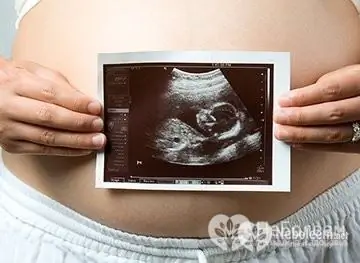- Author Rachel Wainwright [email protected].
- Public 2023-12-15 07:39.
- Last modified 2025-11-02 20:14.
Long term abortion
Abortion at a long gestation period from 15 to 28 weeks is performed for medical and social reasons in special medical institutions.

If by physical indicators a woman is able to give birth to a healthy child, but there are social problems, the doctor is obliged to explain what mental and physiological consequences a so-called large abortion can entail.
Significant social and domestic reasons to have an abortion for a long time:
- Underage pregnant woman, age less than 16 years;
- The presence of three or more minor children in the family;
- Loss of a breadwinner during pregnancy;
- Dissolution of an official or civil marriage;
- Loss of housing, deterioration in material well-being, loss of work;
- The presence of a child with a disability in the family;
- Forensic investigation or imprisonment of a pregnant woman.
Medical indications for a major abortion:
- Severe diseases of the liver, lungs, cardiovascular system, kidneys, vision problems;
- Chronic diseases such as tuberculosis, diabetes, ulcers, cancer problems;
- Epilepsy, hematological pathologies, syphilis;
- Diseases of the central nervous system, mental problems;
- Postponed complex abdominal or other operations that may pose a threat to a woman's health during pregnancy;
- Pathologies and diseases that arose during pregnancy - a severe form of preeclampsia, rubella, exposure to high radiation, etc.;
- Particularly severe physical and other fetal pathologies.
When it is necessary to terminate the pregnancy, and the term is long, it is very risky to do an abortion by vacuum aspiration or curettage, there is a high probability of injury and heavy bleeding due to such methods of abortion after 12 weeks of pregnancy.
Long-term abortion methods
You need to have very good reasons to decide on a large abortion at 12-28 weeks of pregnancy, since the fetus is practically developed and even viable, and for a woman's life, termination of a late pregnancy is extremely dangerous. In addition, the psychological aspect of large abortions should be taken into account, in almost all cases of abortion, a viable child is removed, dying outside the mother's womb, or he is brutally killed in the uterus.
There are the following main methods of long term abortion:
- The method of opening the water bladder is used from 13-18 to 28 weeks of pregnancy. After opening, special forceps are applied to the presenting part of the fetus, a load weighing 250-500g is suspended from them to gradually remove the child. In more than half of women, the course of such a large abortion can take up to a day or more, and its consequences can be infection, bleeding, ruptures in the cervix;
- Minor cesarean section is done for a period of 18-27 weeks, in exceptional cases, to save a woman's life for medical reasons, such an operation can be performed for a period of 13-18 weeks. The fetus is removed through a cavity incision in the lower abdomen, often the removed child moves its limbs and even cries. He dies from hypothermia, for this the fetus is placed in the refrigerator. More than 3% of women who underwent such an operation subsequently suffer from vascular occlusion (thromboembolism);
- Intraamnial replacement of amniotic fluid with a concentrated solution of sodium chloride and glucose is carried out for a period of 18-27 weeks. The cervix is captured with a special instrument, the cervical canal is expanded, a thick special long needle is inserted into the uterine cavity, which pierces the amniotic fluid. Part of the amniotic fluid is sucked out through the needle and a special solution is injected, after a few hours labor begins. The fetus is actually expelled from the uterus, dying a painful death. For a woman, such a procedure is fraught with the ingress of the solution into the circulatory system, an increase in the sodium content in the blood (hypernatremia), which may result in a drop in blood pressure, chest pain, headaches, shock, destruction of red blood cells and, in exceptional cases, death;
- Medicinal method - for a period of up to 27 weeks, drugs containing prostaglandins are injected intravenously, which have a strong effect on the tone of smooth muscles, causing contractions and labor. In most cases, the baby is born alive and dies later. The use of prostaglandins for a major abortion can cause nausea, vomiting, stomach pain, bronchospasm, slow heart rate, drop in blood pressure, and severe uterine bleeding.
Contraindications for abortion in late pregnancy can be acute infectious diseases, any inflammatory processes, fever, diseases in the female genital area, cervical or ectopic pregnancy.
When the gestation period is long, an abortion can be done only after a comprehensive examination. You need to do an ultrasound of the uterus and fetus, determine the Rh factor and blood group, do a clinical blood test, tests for RW, HBS, HIV, hemostasiogram (platelets, prothrombin index, blood clotting time during bleeding), a complete biochemical blood test for glucose, cholesterol, total protein, bilirubin, creatinine, urea. A general urine test should be passed, including examination of smears from the vagina, cervical canal and urethra for bacterioscopic examination, to determine the presence of antibodies to the hepatitis C virus. Do an ECG, chest x-ray, undergo examination by a therapist, and, if necessary, other doctors.
Complications after major abortions
Artificial termination of pregnancy at a later stage is possible only in hospitals where there are all conditions for the provision of emergency medical care - resuscitation, surgical, intensive therapy by doctors with special training.

Despite such a qualified approach to long-term abortions, the following complications are likely to occur later:
- Ruptured cervix;
- Accumulation of blood in the uterus - hematometer;
- Incomplete removal of fragments of the ovum or fetus from the uterine cavity with their further decomposition and infection of the woman's abdominal cavity;
- Damage to the walls of the uterus - perforation;
- Placental polyp;
- Various purulent and inflammatory processes.
The progress of a major abortion must be monitored by ultrasound or such a study be done immediately after the end of the artificial termination of pregnancy, it is important to make sure that parts of the fetus and placenta are completely removed.
After such an operation, the patient must necessarily visit the antenatal clinic in order to undergo the necessary rehabilitation measures and select individual contraceptives for more reliable protection against unwanted pregnancy in the future.
Found a mistake in the text? Select it and press Ctrl + Enter.






